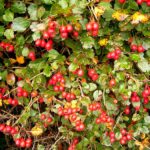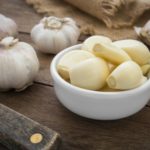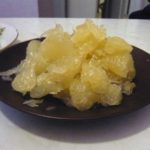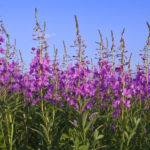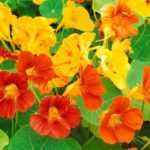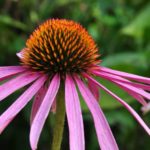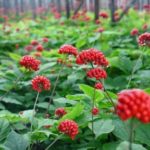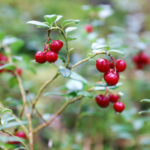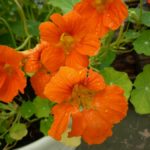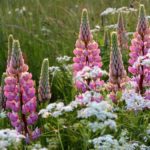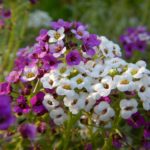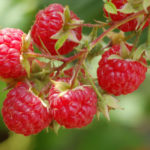Hyssop – Useful Properties
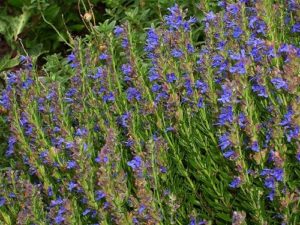 Hyssopus officinalis or blue hypericum, one of the few plants known to mankind since biblical times. Possessing unusual healing properties and a special spicy aroma of hyssop, in ancient times attracted the attention of ancient scientists and is mentioned and mentioned by the “father of medicine” Hippocrates.
Hyssopus officinalis or blue hypericum, one of the few plants known to mankind since biblical times. Possessing unusual healing properties and a special spicy aroma of hyssop, in ancient times attracted the attention of ancient scientists and is mentioned and mentioned by the “father of medicine” Hippocrates.
Hyssop is a unique plant, in its medicinal properties, it is not much inferior to the Hypericum perforatum, and in many ways, surprisingly even surpasses it.
Hyssop officinalis (Hyssopus officinalis) – a perennial shrub belonging to the family Lamiaceae. It has an erect tetrahedral, branched hairy stem up to a half meter or more. On the stem on short stalks there are small leaves of bright green color, elongated with smooth edges. The root system is quite powerful, well-branched, firmly holding the plant in the ground and providing the plant with nutrient moisture in sufficient quantities even in dry times.
Hyssop blooms from June to late autumn. He has small flowers, usually dark blue, but there are also purple and lilac and even pink, purple or white, depending on the variety. Flowers are located in the axils of the leaves up to a dozen or more pieces, forming at the same time elongated spike-shaped inflorescences. Flowering in this plant is not stormy, but prolonged. Flowers open gradually almost throughout the summer, from bottom to top. Therefore, hyssop retains its decorative effect for a long time. Beginning in early September, instead of flowers, dark brown fruits begin to appear, decaying into four nuts containing dark seeds.
Hyssop is unpretentious to the composition of the soil, but does not tolerate increased soil moisture. Under normal conditions, it can grow in one place up to 5-10 years. Its stems and leaves are richly saturated with essential oils and therefore the plant itself has a strong specific aroma. Hyssop medicinal plant is unpretentious, it can be found in many countries of North America, Europe, the Caucasus, the Crimea and the countries of Central Asia. In Russia, it grows in the south of the European part and in the south of Western Siberia. Due to its decorative and spicy properties, it is cultivated as an agricultural crop in some countries of Europe, in India, from Central Asia.
A couple of centuries ago, blue hypericum had more than fifty varieties, but for some reason most of them disappeared. Now in nature there are no more than a dozen species. One of them – pink hyssop is considered a herb with magical properties.
Connoisseurs of medicinal plants are well aware of the useful properties of St. John’s wort. So, hyssop officinalis has no less, and possibly even more, because, in addition to healing, it has long been used in human nutrition.
Hyssop has a peculiar spicy tart pleasant aroma, which is why it has long been used in cooking as spices for cooking, especially meat. To add flavor, dried, chopped leaves are added to the minced meat during the preparation of sausages, sausages, sausages, soups, various fried meat and fish dishes. This is an indispensable spice for game dishes and in the preparation of canned food. It is often used for pickling cabbage, tomatoes, cucumbers and olives. Hyssop is often used as an additive to various varieties of black tea. In its fresh form, it is used in vegetable salads, appetizers, marinades, desserts, drinks, including alcohol. Without hyssop, there would not have been such famous liquors as Benedictine and Chartreuse, which the Benedictine monks began to make back in the Middle Ages. Since then, it has been constantly used in the production of liquors, and is part of one of the most popular alcoholic beverages, Absinthe.
From the leaves produce essential oil, which is in great demand in the perfume industry. The strong and persistent aroma of this plant attracted the attention of perfumers several centuries ago and is still used in the manufacture of perfumes, eau de toilette, elixirs, creams, tooth rinses, shampoos and balms.
Hyssop is a wonderful honey plant. Its aroma seems to attract bees, so beekeepers use it when transplanting bee swarms into new hives. Having fanned a new hive with a broom from hyssop and leaving a few branches or flowers in a new hive, you can be sure that the bees will not leave, but will quickly adapt to a new dwelling, probably for this reason this plant was given another name “bee grass”. Flowers give a large amount of pollen and nectar, so the bees in the places of its growth give a lot of honey, which is highly appreciated by beekeepers. But all kinds of pests on the spirit do not tolerate its astringent smell, where it grows there are not even mosquitoes.
